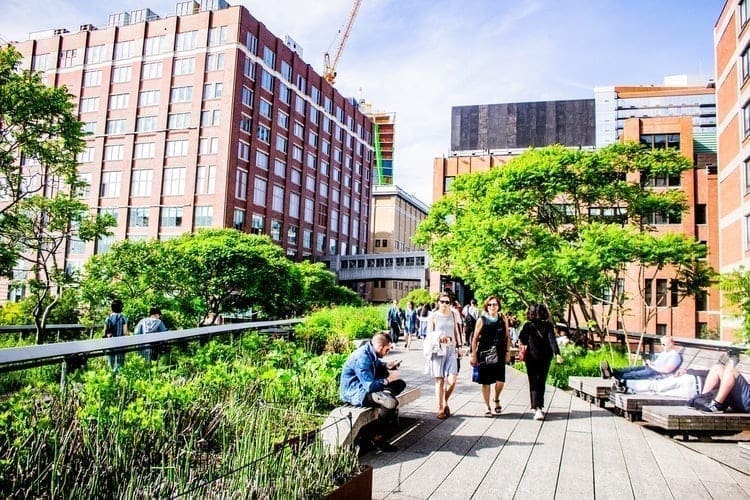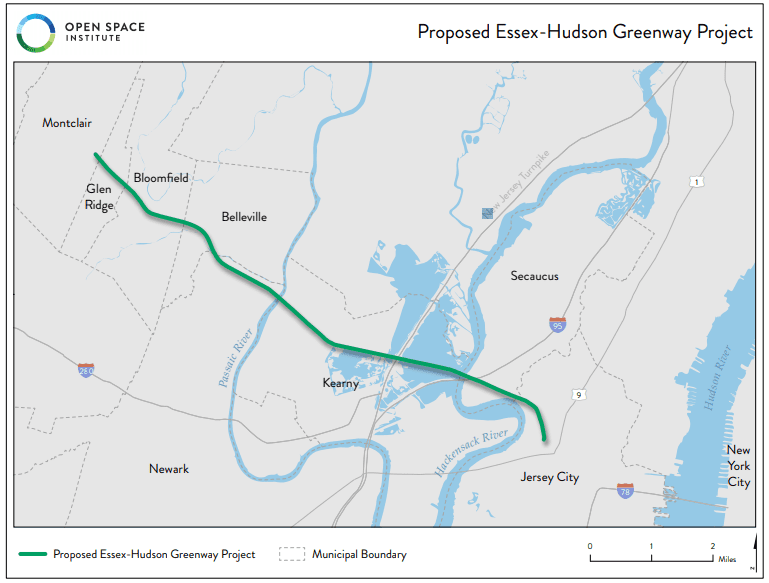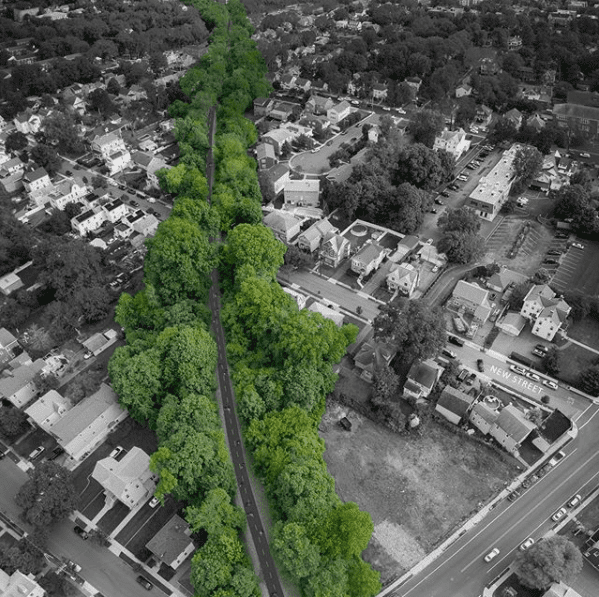Imagine riding your bike from Essex County to Jersey City. Sounds like a nightmare, right? Just the thought alone of weaving through traffic and finding some kind of manageable route among the NYC commuters is stressful in and of itself. But that could all change soon, thanks to a new endeavor known as the Essex-Hudson Greenway Project.
In the coming years, North Jersey citizens can expect to find a new source of refuge from congested living, in the form of a shared-use bike and recreation trail spanning roughly nine miles between Essex and Hudson counties. Let’s take a look at everything you need to know behind this new, promising initiative in New Jersey.
What is the Essex-Hudson Greenway Project?
The Essex-Hudson Greenway will replace an old NJ transit rail line that has been unused by commuters since 2002. According to the project’s website, the greenway will be a “linear park for recreation, transportation, and healthy communities.” Essentially, this will be a nine-mile-long trail that’s expected to be 100 feet in width throughout and can be used for safe exercise, transportation, or simply as a nice area to spend time outside. This project was heavily influenced by Manhattan’s High Line (pictured below), though the hope is that this initiative has a more functional benefit for local citizens. The idea is that the Essex-Hudson Greenway could serve as a legitimate transportation alternative for those who’d prefer to ride their bikes or even walk to get around.

The trail passes through Montclair, Glen Ridge, Bloomfield, Belleville, Newark, Kearny, Secaucus, and Jersey City. In addition to the bike trail and space for recreation, the plan includes an expected 135 acres worth of greenery.

Why it Matters
The Essex-Hudson Greenway project is more than just glorified bike lanes; it can add real value to North Jersey communities. For one, it provides one of the few legitimate alternatives for safe, carbon-free transportation in North Jersey. This new path would allow commuters to significantly reduce their carbon footprint by commuting via bike or foot if they so desired, which few have the opportunity to do currently. These alternatives would aid in reducing traffic congestion in local areas. The greenway would also provide more streamlined access to nature and the outdoors, a rarity in North Jersey. In addition to the 135 acres of greenery to be included on the path, it’s also expected to have rain gardens, capturing rainfall and protecting local communities from flooding. All in all, the plan would increase biodiversity, offer transportation alternatives, promote health and wellness, and improve the quality of life for North Jersey residents.
Despite all of those desirable features, the benefits that might help gain support the most are those expected for the local economy. The construction of this greenway would result in job creation for local residents, which could be substantial, depending on how long the construction process takes. Additionally, the linear park could support local businesses and stimulate the economy, ideally bringing more citizens out into their surrounding communities.
Most importantly, however, the new greenway would serve as a significant step forward in ensuring today’s cities are more sustainable for the future.
Whose Idea Was it Anyway?
This project is primarily run by the Open Space Institute. They’re a non-profit organization whose mission is to protect land by safeguarding local ecology and promoting environmentally-friendly recreation in natural environments. Open Space’s main partners have been the New Jersey Bike & Walk Coalition and the September 11th National Memorial Trail Alliance.

The biggest step was taken in mid-2020 when the Open Space Institute reached a preliminary agreement to purchase the abandoned railway from the owners of the tracks, Norfolk Southern Railway Company. The deal was two years in the making and was assisted by support from Open Space’s core partners. There are also numerous local shareholders who’ve helped propel the initiative forward. Open Space continues to emphasize the need for community buy-in and assistance to ensure the Essex-Hudson Greenway project’s success. With that, let’s take a look at what the road ahead looks like for reaching the finish line.
The Road Ahead
This plan sounds exciting, but there’s still significant hoops to jump through. It took nearly two years to reach the preliminary sale agreement, which doesn’t solidify anything just yet. Norfolk Southern, who’s selling the railway, now is seeking the federal approval it needs to move forward with the sale. Whereas the Open Space Institute and its partners now have to figure out financing. The sale of just the abandoned tracks costs a whopping $65 million. That doesn’t even begin to include the costs to construct and maintain the linear park, which are expected to be hefty price tags as well. The money will likely have to come in the form of grants and government funding. As you can imagine, this will be no easy task. However, the plan is expected to have a purchase deadline in place within the next year or so.
Check out this video with drone footage from along the property that would become the Essex-Hudson Greenway, courtesy of @OpenSpaceInst, @NJBikeWalk, and @911trail. Visit https://t.co/QRuQl5HhOS to learn more! pic.twitter.com/TBgtcko0Dx
— Essex-Hudson Greenway (@EHGreenway) August 14, 2020
Community Discourse and Design
Beyond financing, the next steps include community discourse, designs for the park, and environmental and engineering assessments of the area. As far as the designs go, you can see that they have yet to reach this stage based on the lack of supporting graphics. There are reasonable expectations for what the linear park will look like. But other barriers such as financing and community outreach are taking precedence. An essential and underrated element is community support. Ultimately, this can be the deciding factor as to whether this plan comes to fruition or not.
As far as the timeline for the Essex-Hudson Greenway Project, there isn’t one yet. The emergence and sustained presence of COVID has only delayed this process further. I wouldn’t expect a timeframe at least until the sale completely goes through sometime in the next year.
How You Can Help
Like I said earlier, the deciding factor for this project’s success could very well come down to community support. It’s imperative that the local communities get behind this project and use their voice. In fact, Open Space Institute mentioned how they want to have more discourse and input from the community. They feel this dialogue will help them to better decide what features should be included in the linear park. This project aims to provide as much value to the citizens of North Jersey as possible; community input is essential.
If you want to see the Essex-Hudson Greenway become a reality, there are several ways to make an impact. Check out the EHG website for details on ways you can help, or take a look at this page on the website for Open Space Institute if you’d be interested in donating.
For updates and additional information, be sure to follow the Essex-Hudson Greenway Instagram account.
Garrett is a writer at The Digest. He currently lives in Astoria, NY, and loves writing about topics that make readers think. His passions include film, sports, traveling, and culture.
- Garrett Rutledgehttps://thedigestonline.com/author/grutledge/
- Garrett Rutledgehttps://thedigestonline.com/author/grutledge/
- Garrett Rutledgehttps://thedigestonline.com/author/grutledge/
- Garrett Rutledgehttps://thedigestonline.com/author/grutledge/


